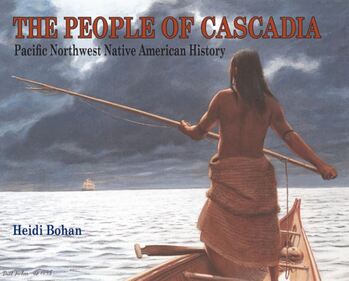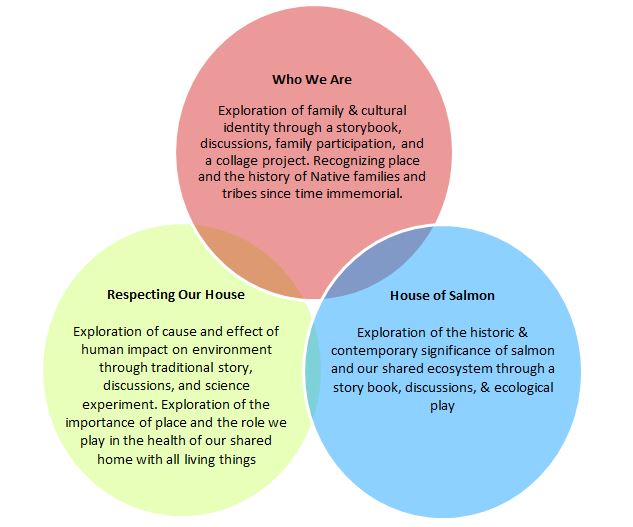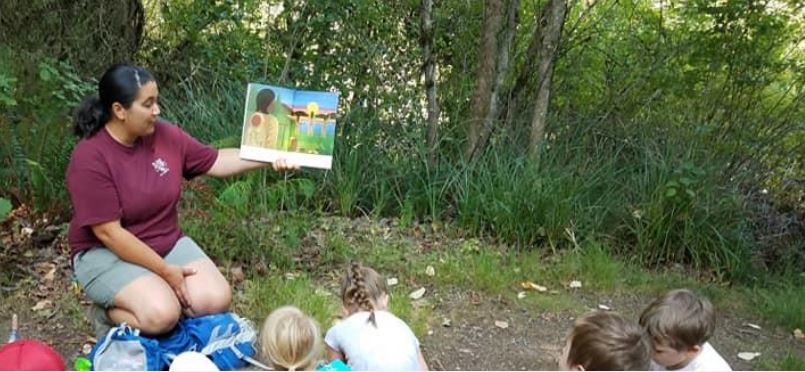|
By Nicole Corbo When I first taught preschool, almost thirty years ago, the curriculum (at least the holiday curriculum) was the same as it had been when I was a preschooler myself. It was commonplace to make silver-buckled hats and feathered headdresses out of construction paper at the end of November. It was the one time of year that Native Americans were mentioned in the curriculum, and they were spoken of as people who only existed in the past. The story presented to students, both vague and inaccurate, suggested that all Native Americans were the same: same limited language; same clothing – which was only based on what people who lived on the Plains once wore; and same willingness to happily hand over their land and resources, as there was absolutely no acknowledgement of broken treaties, displacement, or conflicts.  Gratefully, a shift toward a more accurate depiction of the past and present is occurring with more mindful ways to teach about Thanksgiving, and educators are recognizing the need to incorporate these lessons not just in November, but all year. We begin with land acknowledgements, which are becoming more common, but we don’t stop there. Educators are seeking resources that help revise stereotypical representations of Indigenous peoples and replace harmful narratives with accurate information. One such resource is Debbie Reese’s article, “Critical Indigenous Literacies: Selecting and Using Children’s Books about Indigenous Peoples”, which not only addresses literature, but also speaks about the language we use when talking about Native Nations. A wonderful resource specific to our region is Heidi Bohan’s, The People of Cascadia, which is described as, “a highly visual and comprehensive historical glimpse into the daily lifeways of four major cultural language groups of the Pacific Northwest.” Plus, this book complements our newest and most comprehensive resource – a curriculum called Since Time Immemorial: Tribal Sovereignty in Washington State, which has been endorsed by all 29 federally recognized tribes and will be implemented with students from preshcool through high school. The Since Time Immemorial Early Learning Curriculum, created by Native Early Learning educators, consists of three lessons and is designed for early learners to experience concepts related to tribal sovereignty and local tribal history. Nurture in Nature Preschool (part of Tacoma Nature Center) adapted the curriculum to flow with their ongoing environmental and science themes this past summer. Utilizing books, games, songs, and activities, they presented the lessons while engaging students in the natural environment around them. Read their full report (below photo) for more information.
As nature-based educators, who are already connecting children to the land we live on, we have unique opportunities for supporting this shift to teach history with honesty and integrity. We enjoy the benefit of engaging in nature as we introduce students to the ways that Indigenous peoples inhabited this area in the past, as well as honor and connect early learners with the tribes that still exist and thrive here today. At this time of year in particular, when that story of the first Thanksgiving may come up, we can reframe the common myths that are still perpetuated through media and, possibly, even in other educational settings, and promote truth in education.
One of the WaNPA goals is to encourage resource sharing, so please share in the comments below what you did with your students this month; please share the books, games, activities, and projects you’re using to revise misinformation and help early learners connect meaningfully with national and local history. Please share what you’re doing to connect with local tribes. Also, please share in the comments if and how you’ve utilized the Since Time Immemorial curriculum.
2 Comments
11/2/2021 06:15:45 pm
It helped when you mentioned that with integrity and honesty, we have opportunities for supporting this shift to teaching history. My wife mentioned to me last night that my son's teacher mentioned the Native American Curriculum and asked if I have any idea what is the best option to do. Thanks to this informative article and I'll be sure to tell my wife that I'll be sure to buy the book for my son.
Reply
Leave a Reply. |
|||||||



 RSS Feed
RSS Feed
